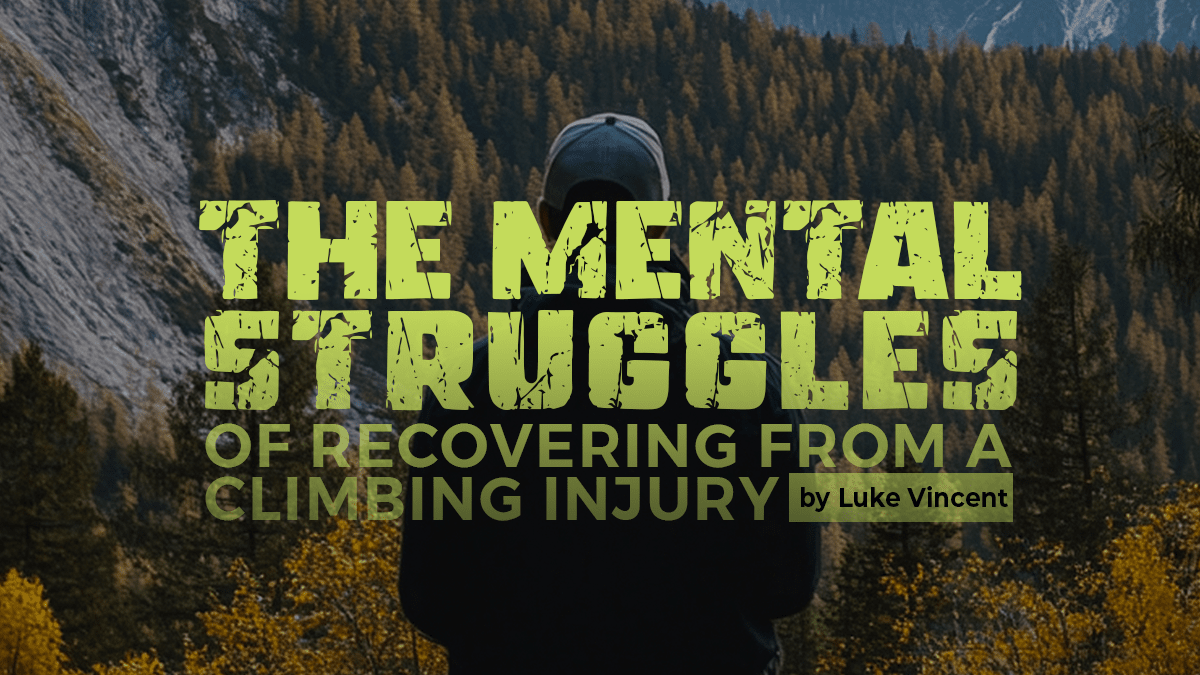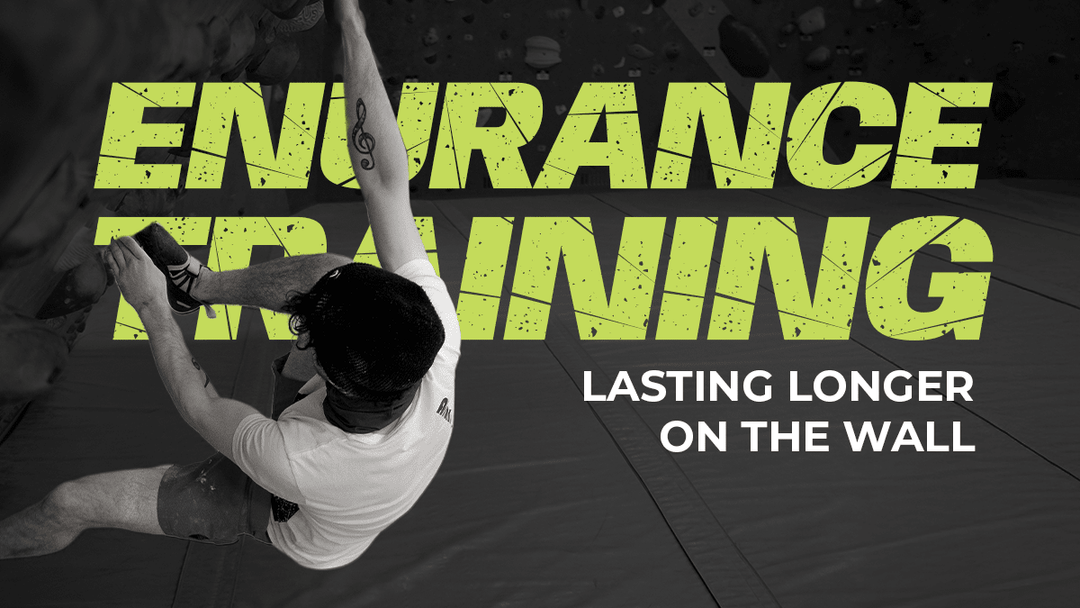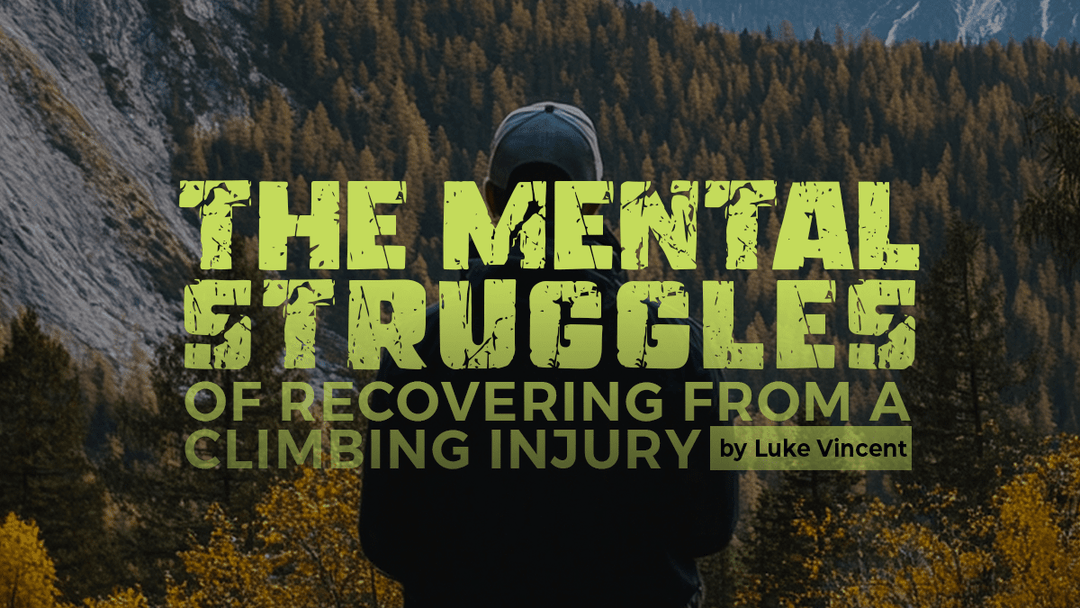The Mental Struggles of Recovering from a Climbing Injury

by Luke Vincent
Recovering from a climbing injury isn’t just a physical challenge—it can also take a significant toll on your mental well-being. For many climbers, the time away from the wall can lead to feelings of frustration, fear, and self-doubt. Understanding the psychological hurdles and developing strategies to cope with them can help you emerge stronger, both mentally and physically. Here’s a guide to navigating the mental struggles of injury recovery.
The Emotional Impact of Injury
Frustration and Impatience: Being sidelined from climbing can be incredibly frustrating, especially if you’re used to regular sessions at the gym or crag. It’s common to feel impatient with the recovery process and want to rush back too soon. You may find yourself battling thoughts like, “Why did this happen to me?” or “When will I get back to where I was?” These feelings are natural, but unchecked, they can hinder your recovery.
Fear of Re-injury: Once you’ve been injured, it’s natural to worry about getting hurt again. This fear can make returning to climbing feel daunting, particularly if the injury occurred during a specific type of move or on a specific route. It’s important to acknowledge this fear while not letting it control your actions.
Loss of Identity: For many climbers, the sport is more than a hobby—it’s a core part of who they are. An injury can lead to feelings of disconnection and a loss of purpose. Without regular climbing sessions, you might struggle with how to define yourself or fill your time in meaningful ways.
Isolation: Time away from climbing often means less interaction with your climbing community, which can lead to feelings of loneliness or a sense of being left out. Seeing friends post about their climbing achievements can sometimes amplify these emotions.
Coping Strategies for Mental Recovery
1. Accept the Recovery Process
- Acknowledge that healing takes time and that pushing too hard can delay your progress. Patience is not just a virtue—it’s a necessity.
- Focus on small milestones and celebrate each step forward. Whether it’s regaining range of motion or completing a rehab exercise, every achievement matters.
- Remind yourself that recovery is part of the journey, not a setback. Many climbers return stronger and more mindful after working through an injury.
2. Stay Connected to the Climbing Community
- Attend climbing events or hang out at the gym, even if you’re not climbing. Being present helps maintain your connection to the sport and your friends.
- Offer to belay friends or help with spotting during bouldering sessions. These activities keep you engaged and remind you that you’re still part of the community.
- Share your experience with other climbers who’ve dealt with injuries—their insights and support can be invaluable. You might even find yourself inspiring someone else with your resilience.
3. Shift Your Focus to What You Can Do
- Explore other physical activities that don’t aggravate your injury, like yoga, swimming, or light hiking. These can keep you moving and boost your mood.
- Work on mobility, flexibility, and core strength to stay active and engaged. Improving these areas can benefit your climbing when you return.
- Use this time to focus on mental training, such as visualization techniques or mindfulness exercises. Imagining yourself climbing can help retain your mental edge.
4. Reframe Negative Thoughts
- Replace thoughts like, “I’ll never climb again,” with more positive affirmations, such as, “I’m taking the steps I need to come back stronger.” These shifts in perspective can make a big difference.
- Focus on what you’ve learned from the experience and how it can make you a better climber in the long run. Injuries often teach lessons in patience, humility, and gratitude.
5. Set Realistic Goals
- Work with your doctor or physical therapist to establish a recovery timeline. Having a plan can help you feel more in control.
- Set achievable goals, like regaining specific movements or climbing a favorite route at a lower grade. These can provide motivation and a sense of accomplishment.
- Avoid comparing your progress to others or to your pre-injury performance. Every climber’s journey is unique.
Returning to Climbing
When the time comes to get back on the wall, it’s essential to approach it with patience and mindfulness.
Start Slowly: Begin with easy routes or problems that don’t stress the injured area. Gradually build up difficulty as your confidence and strength return. Remember, rebuilding takes time, and there’s no shame in starting small.
Listen to Your Body: Pay attention to any signs of discomfort or pain, and don’t hesitate to rest if needed. Your body knows what it needs—respect its signals.
Embrace Mental Growth: Use your recovery as an opportunity to develop resilience and mental toughness. The lessons you’ve learned during this time can make you a stronger climber, both physically and emotionally. Overcoming adversity can lead to a renewed appreciation for the sport.
Recovering from a climbing injury is as much a mental journey as it is a physical one. By addressing the psychological challenges head-on and adopting a positive mindset, you can navigate the ups and downs of recovery with grace. Remember, every climber faces setbacks, but it’s how you respond to them that defines your path forward. Stay patient, stay focused, and trust the process of recovery. With time, determination, and a proactive approach, you’ll find yourself back on the wall, stronger and more determined than ever.




